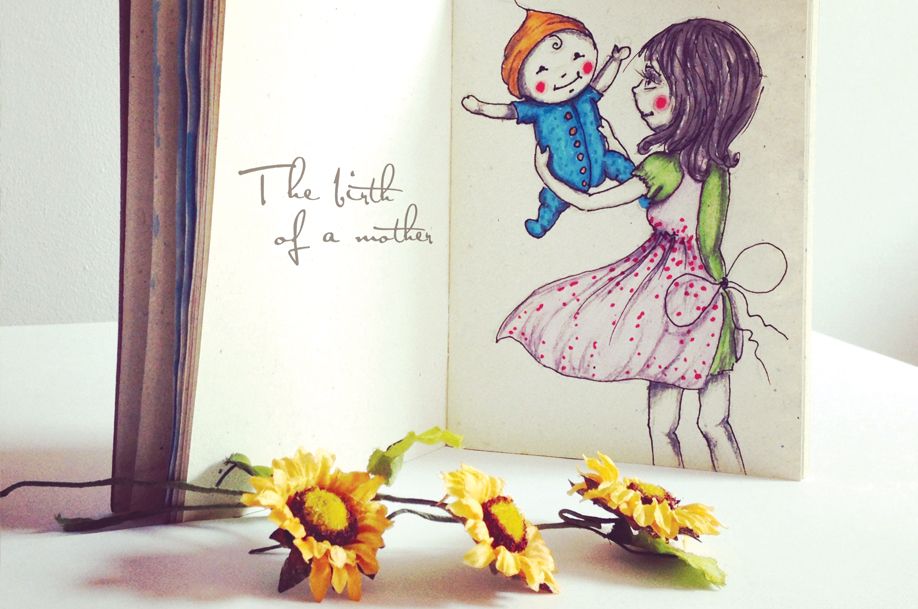Where did it all begin? It all leads back to one afternoon when my father put me in front of an easel in our front yard, with paints in my hand and a blank canvas. From that moment, I understood that imagination is the key to everything. The imagination to view things differently, be it a situation, a thought or even just the light surrounding a shadow. And it’s always your imagination that allows to to tell the story: with it, you can open doors that would otherwise be closed, you can take a peek inside. It’s a bit like dreaming with your eyes open.
Ever since that moment, I have drawn pictures, even if that’s not quite the right term to describe it.
Since then, I illustrate bits of stories, though the process is completely in reverse.
The picture arrives first, flowing from my pencil; then the story continues with Indian ink, and finishes with colour. It is at this point that it starts to tell a story in words. You could say that I’ve written whole books, only all in my head. What I draw is the illustration of this silent story-telling. I’ve been doing it forever, I’ve filled entire notebooks of more or less completed stories.
When I started using Instagram, however, it opened up a totally unexpected world to me. In the beginning, I used it to capture little moments in my life; something I have continued to do because I enjoy it and, above all, because it helps me to look at things around me in a radically different way. However, the more I got into photography, the more I felt the need to use it in my illustrated world.
It took a while for me to work out how to use photographs alongside a story but, in the end, I think I can say that, at least for now, I have found a way to tell the story of the micro worlds in my head that emerge as illustrations in my Moleskine.
I wanted the photograph to demonstrate the material side of the whole process; not just of the drawing, but also everything surrounding these ‘illustrated words’, what it was in my head that inspired them. So my composition had to include my Moleskine, the drawing, the words and the source from which all of these originated. And here is the result: a combination of objects, a canvas of a white background and the drawing in its natural form.
The most difficult part was finding the right light and angle to capture the subject matter. I tried several techniques, from compositions to the Moleskine standing upright, all on its own; I tried hundreds of different ways! Until I arrived at these latest images.
I discovered that white is essential in managing to give substance to the subject, or subjects, because its not just the drawing that we’re talking about. The next step was getting my hand in as part of the composition: a sort of guide, captured whilst turning the page or in a moment of interaction with the drawing itself.
The biggest challenge, however, was finding consistency of style. Most often, inspiration just comes to me when it comes. Even at night! I started to take the photos more or less at the same time of day, in the same place and trying to capture the same light. Then the rest is down to editing; I try to soften the shadows and blend the colours, usually using the VSCO app.
So that’s it, more or less. That’s how the project [sketchingwords] began.
Cinzia Bolognesi – graphic designer and illustrator
www.ninibilu.com
instagram/cuordicarciofo
twitter.com/cuordicarciofo
facebook.com/Nini-Bilù







